在Encoder-Decoder结构(即Seq2Seq,N vs. M)中,Encoder把所有的输入序列都编码成一个统一的语义特征再解码,因此,
中必须包含原始序列中的所有信息,它的长度就成了限制模型性能的瓶颈。如机器翻译问题,当要翻译的句子较长时,一个
可能存不下那么多信息,就会造成翻译精度的下降。
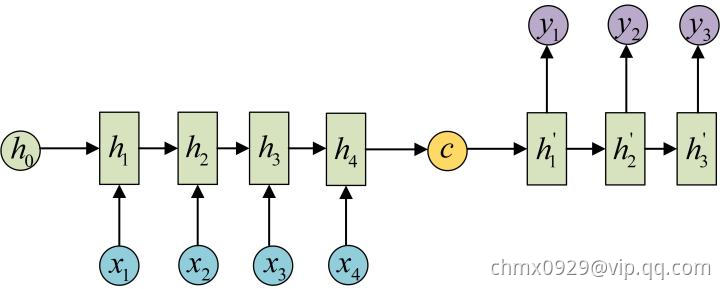 或者
或者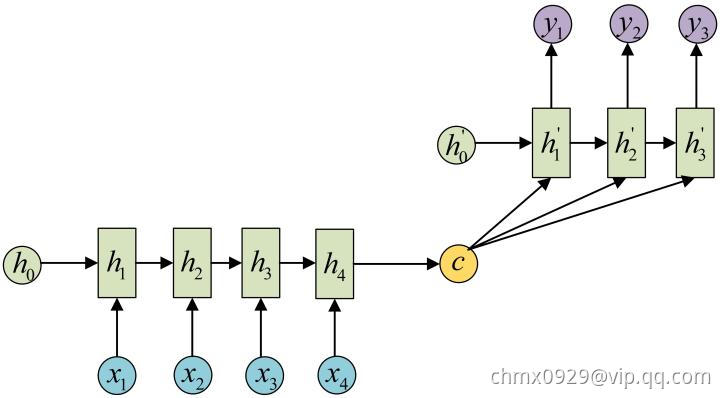
Attention机制通过在每个时间输入不同的来解决这个问题,下图是带有Attention机制的Decoder:
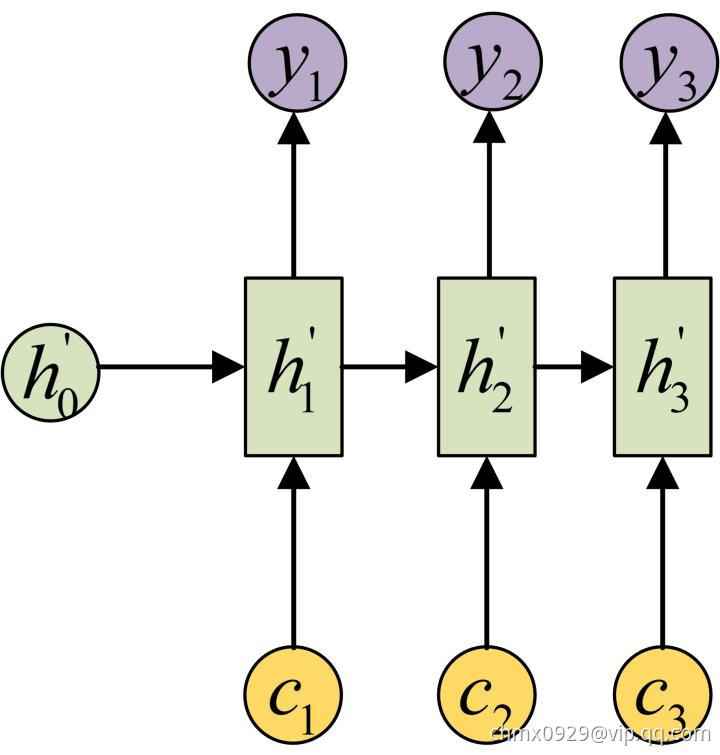
每一个会自动去选取与当前所要输出的
最合适的上下文信息。具体来说,我们用
衡量Encoder中第
阶段的
和解码时第
阶段的相关性,最终Decoder中第i阶段的输入的上下文信息
就来自于所有
对
的加权和。
以机器翻译为例(将中文翻译成英文):

输入的序列是“我爱中国”,因此,Encoder中的就可以分别看做是“我”、“爱”、“中”、“国”所代表的信息。在翻译成英语时,第一个上下文
应该和“我”这个字最相关,因此对应的
就比较大,而相应的
就比较小。
应该和“爱”最相关,因此对应的
就比较大。最后的
和
最相关,因此
的值就比较大。
至此,关于Attention模型,我们就只剩最后一个问题了,那就是:这些权重是怎么来的?事实上,
同样是从模型中学出的,它实际和Decoder的第
阶段的隐状态、Encoder第
个阶段的隐状态有关。
同样还是拿上面的机器翻译举例,的计算(此时箭头就表示对
和
同时做变换):
计算:
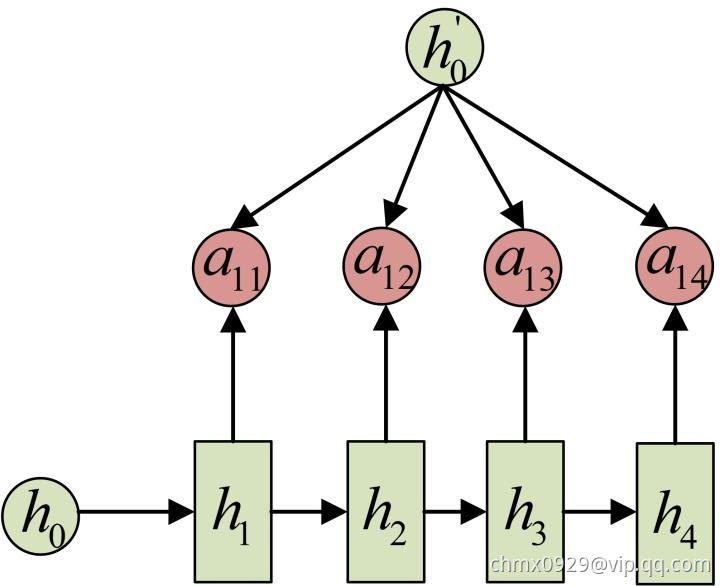
计算:
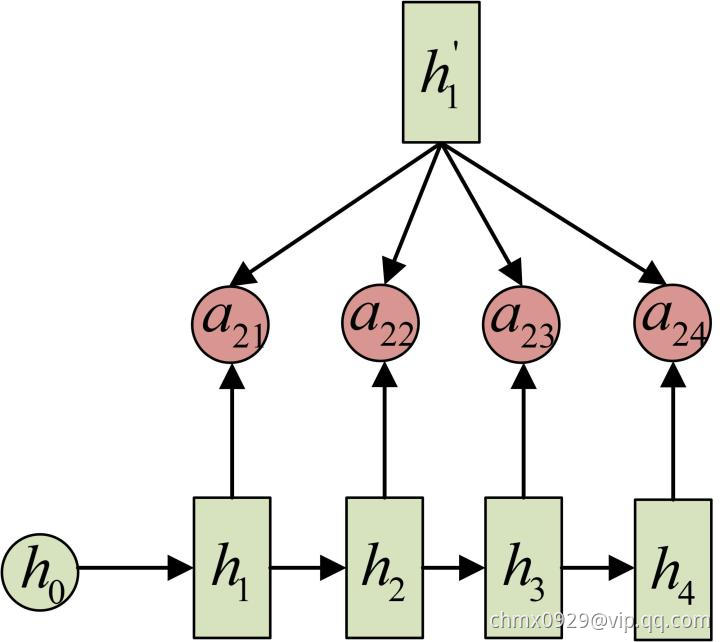
计算:
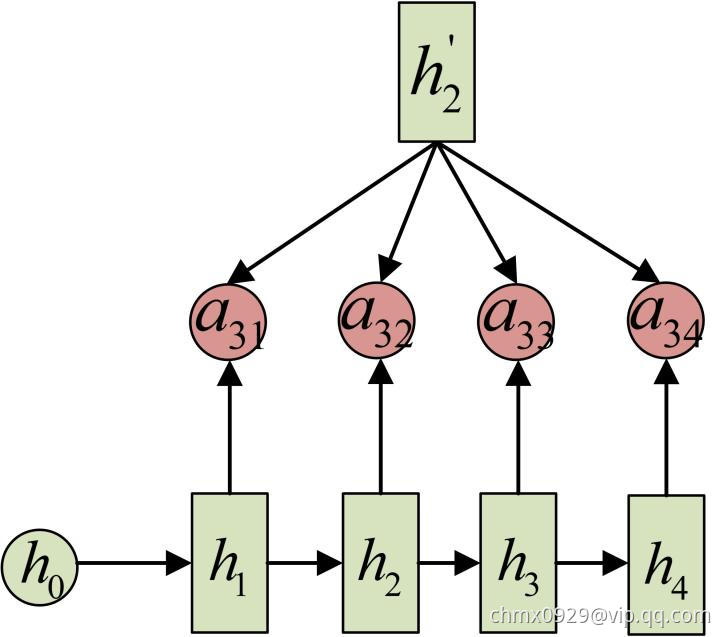
以上就是带有Attention的Encoder-Decoder模型计算的全过程。

